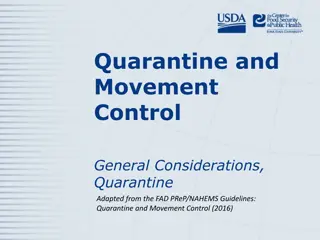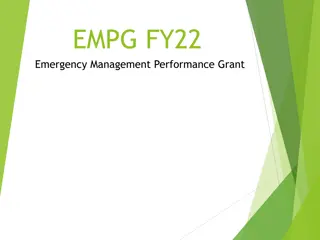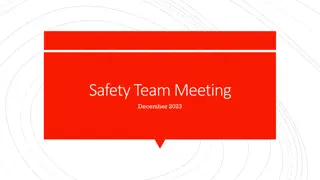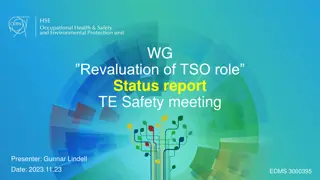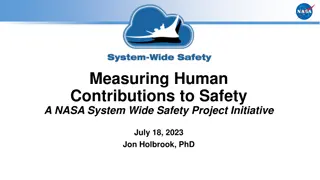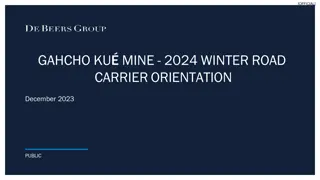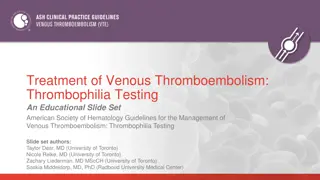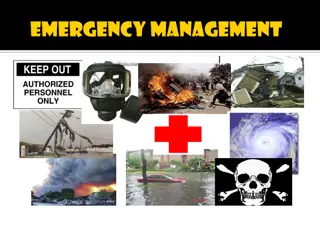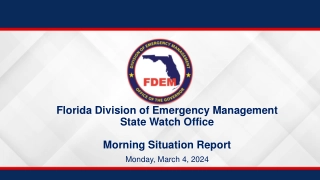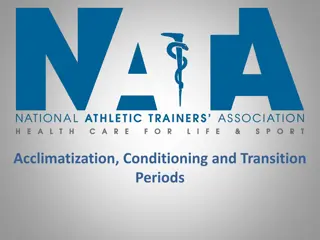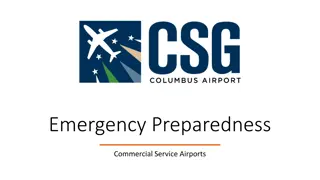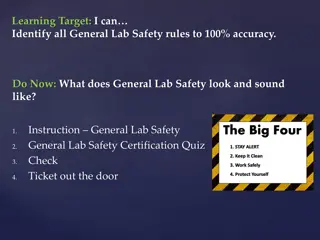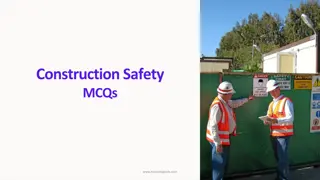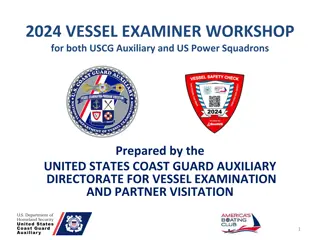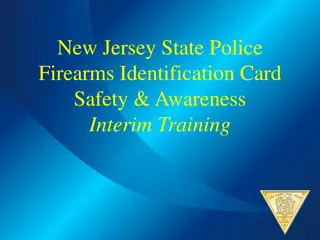Safety and Emergency Management Guidelines at Griffith University
Ensure compliance with safety protocols at Griffith University by completing the compulsory contractor induction. Access emergency contact details, campus support services, evacuation procedures, and fire emergency protocols. Familiarize yourself with evacuation diagrams and know how to respond in case of fire or smoke incidents. Learn about the role of Building Wardens in handling emergencies effectively.
Download Presentation
Please find below an Image/Link to download the presentation.
The content on the website is provided AS IS for your information and personal use only. It may not be sold, licensed, or shared on other websites without obtaining consent from the author. Download presentation by click this link. If you encounter any issues during the download, it is possible that the publisher has removed the file from their server.
Presentation Transcript
Contractor Induction - Emergency Management Campus Life Facilities
Welcome Welcome to Griffith University. Griffith University requires compliance with safe, secure and environmentally-sound work procedures and practices by all persons operating across our campuses. We have created this induction for you as part of our commitment to safety. This induction is compulsory for all contractors, sub-contractors and their employees who carry out work activities on our campuses and must be completed prior to commencing work.
Emergency Contact Details Call Fire, Ambulance, and Police on 000 or 112 from a mobile. 1800 800 707 (Campus Support free call) for all emergencies on all campuses
Campus Support Services (Security) Campus Location Extension External Number Gold Coast Level 3 G01 Academic 1 Building x7777 5552 7777 Logan L03 Wayne Goss Building entrance x7777 3382 1717 Nathan The Library (Willett Centre) x7777 3735 7777 Mt Gravatt M13 Library Entrance x7777 3735 6866 Old College of Art Courtyard x7777 3735 6226 Qld Conservatorium Foyer x7777 3735 6363
Fire Emergency and Evacuation Griffith University is a large organisation with multiple buildings across multiple locations. Important emergency information is displayed on the Evacuation Diagrams in each building. Once on site familiarise yourself with the relevant evacuation diagram (of the building(s) in which you will be working) to ensure that you know the most direct exit routes, the location of first response equipment and assembly areas.
Evacuation Diagrams What Evacuation Diagrams show:
Upon Discovering Fire or Smoke 1. Immediately notify the emergency services by calling: 000 / 112 from a mobile 2. Activate a manual call point press button in red box 3. Shout fire fire fire 4. Alert Campus Support by calling: 7777 from an internal phone; free call 1800 800 707
Fire Emergency There are nominated Building Wardens in each building specifically trained to assist you in the event of an emergency. In an emergency, these wardens are identified by red caps and lanyards. Never block emergency exits or obstruct paths of travel. Never use stairwells for storage.
Emergency Warning Systems (EWS) EWS are installed in a variety of Griffith University buildings and provide audible, visual signals and verbal public address throughout the building. 1. Verbal Announcement System. All announcements over the public address system must be followed. 2. When you hear the 2-tone evacuation alarm you must: Tone 1 Beep Beep Beep Action: Prepare to evacuate; listen for instructions of wardens Tone 2 Whoop Whoop Whoop Action: Evacuate now. Follow instructions of wardens.
Evacuation In an evacuation you must follow these 4 easy steps: 1. Follow all instructions of the Building Wardens and proceed to the nearest exit in an orderly manner. Do not rush or use lifts. Do not deviate from the instructions as this may put you and others at risk of harm. 2. Go to the assembly area. 3. Remain in the assembly area unless you are instructed to do otherwise by a Warden or Emergency Services 4. Do not attempt to re-enter the site / building until the all-clear has been given by a Building Warden or Emergency Services
Evacuation If there is smoke, keep as low as possible to the floor, well below the level of smoke when evacuating a building. Smoke will reduce visibility and make your eyes water. Smoke inhalation can cause confused thought, breathing difficulties and can be fatal. Avoid moving through smoke-filled areas, unless no other exit is available. Prior to opening a door, feel it for heat. If it is hot, that may indicate there is a fire on the other side of the door. In this case, look for an alternate exit.
Campus Evacuation If it is decided to evacuate an entire campus, please ensure you follow the instructions provided by your building warden. For safety it is important that the evacuation is conducted in an orderly way to avoid crowding or traffic jams. You MUST follow the instructions of the Building Wardens and Emergency Services at all times.
Bushfire Emergency In the event of a bushfire on or approaching campus, contact your Campus Contact ASAP and tell them your location on campus. The default state in the event of a bushfire is to Shelter in Place within the campus SAFE AREA. Your Campus Contact will advise the nearest safe area and/or any other actions required. Only buildings of brick or concrete construction should be used for shelter. Windows should be closed. Do not return to your vehicle and attempt to leave the campus.
Bushfire Emergency Mt Gravatt SAFE AREA Nathan SAFE AREA Gold Coast / Logan / Southbank The threat of bushfire at the Gold Coast, Logan or Southbank campus is minimal. If necessary, shelter inside any building on the campus. Inside any of the admin or teaching buildings in the campus core Inside any of the admin or teaching buildings in the main teaching area
Fire Fighting Equipment All Griffith University buildings have first response firefighting equipment installed comprising of fire blankets, fire extinguishers and fire hose reels. However, you should only attempt to put out a fire if you have been trained in the use of this equipment and it is safe to do so. In any situation where there is smoke the building should be evacuated immediately. Fire blankets are made from a flame-resistant material that can be used to extinguish a small fire by cutting off the oxygen supply to the fire. They can also be used to wrap around a person escaping a fire to minimise the heat and potential for burns.
Fire Fighting Equipment To operate a fire extinguisher, remember PASS:
Personal Emergency Evacuation Plans (PEEPs) If you have a disability (temporary or permanent) that may mean you require assistance during an emergency, it is your responsibility to advise your Campus Contact who can assist you to develop a Personal Emergency Evacuation Plan (PEEP) and help you to notify the appropriate Building Wardens.
First Aid and Seeking Medical Attention Contractors are responsible for providing their own first aid. Contractors may also be assisted by University first aid officers, Campus Support or other emergency services personnel. In the event of injury, you must: For a serious injury call an ambulance by dialling 112 (on mobile) or 000 (you will need to dial 0-000 if calling from an internal extension) . Advise your Campus Contact as soon as possible so that an Incident Report can be completed Administer or seek first aid Notify Campus Support (Security) on internal ext. 7777 (free call 1800 800 707). Automatic External Defibrillators (AEDs) are in various locations on each campus. Contact Campus Support for assistance.









